Weight Loss Procedures
1 of 8
Sleeve Gastrectomy
Gastric sleeve surgery or sleeve gastrectomy is a bariatric procedure that involves reducing the size of your stomach to limit the amount of food you can eat, helping you lose excess weight, when dieting and exercise alone does not work.
This limiting procedure works by permanently removing a large portion of your stomach so it can only hold a small amount of food. Sleeve gastrectomy also removes the part of the stomach that produces the hunger-stimulating hormone ghrelin to decrease your appetite. After the procedure, you will feel full after eating much less and be less hungry between meals.
Some advantages of gastric sleeve surgery include a relatively short hospital stay, requires no rerouting of the food stream, causes favorable changes in gut hormones to suppress hunger, reduce appetite, and improve satiety.
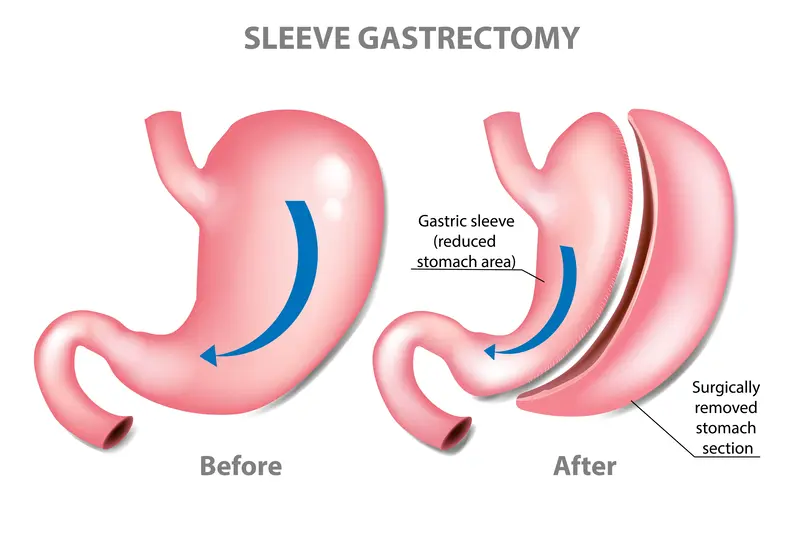 Call Me back
Call Me back
2 of 8
Endoscopic Sleeve Gastroplasty
Endoscopic Sleeve Gastroplasty (ESG) is a non-surgical procedure using the endoscopic technique. A series of stitches are applied within the stomach to create a narrow tube which significantly decreases the stomach’s capacity. This procedure has several benefits, including weight loss, improved quality of life for gastric ulcer patients, and better diabetes management. The whole procedure takes about one hour to perform, and the patient can go home safely and be discharged the next day from the hospital.
Studies show the procedure, when combined with a comprehensive dietary and lifestyle program, leads to an average of approximately 15-25% of total body weight over 12- 18 months. This procedure is good for people whose BMI is between 30 – 40.
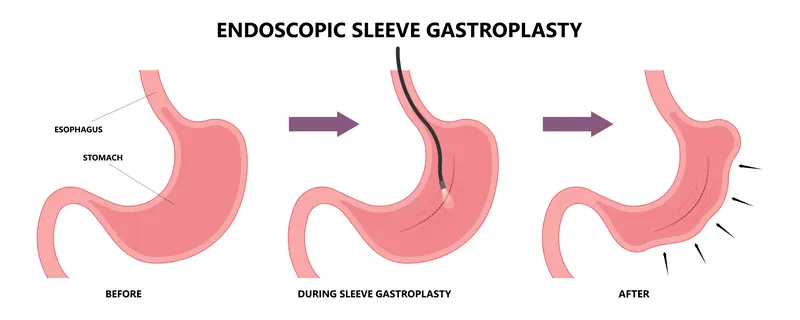 Call Me back
Call Me back
3 of 8
Mini- Gastric Bypass Surgery
The Mini Gastric Bypass (MGB) is a type of weight loss surgery that combines principles of both restriction and malabsorption. This procedure involves creating a smaller stomach pouch and bypassing a portion of the small intestine. The goal is to restrict food intake and reduce the absorption of calories, making weight loss more achievable when diet and exercise have not provided satisfactory results.
This procedure has many benefits. It's a simpler operation with a shorter operating time compared to other bariatric procedures. This surgery also often leads to significant long-term weight loss, favorable changes in gut hormones reducing hunger and improving satiety, and can help resolve many obesity-related health conditions.
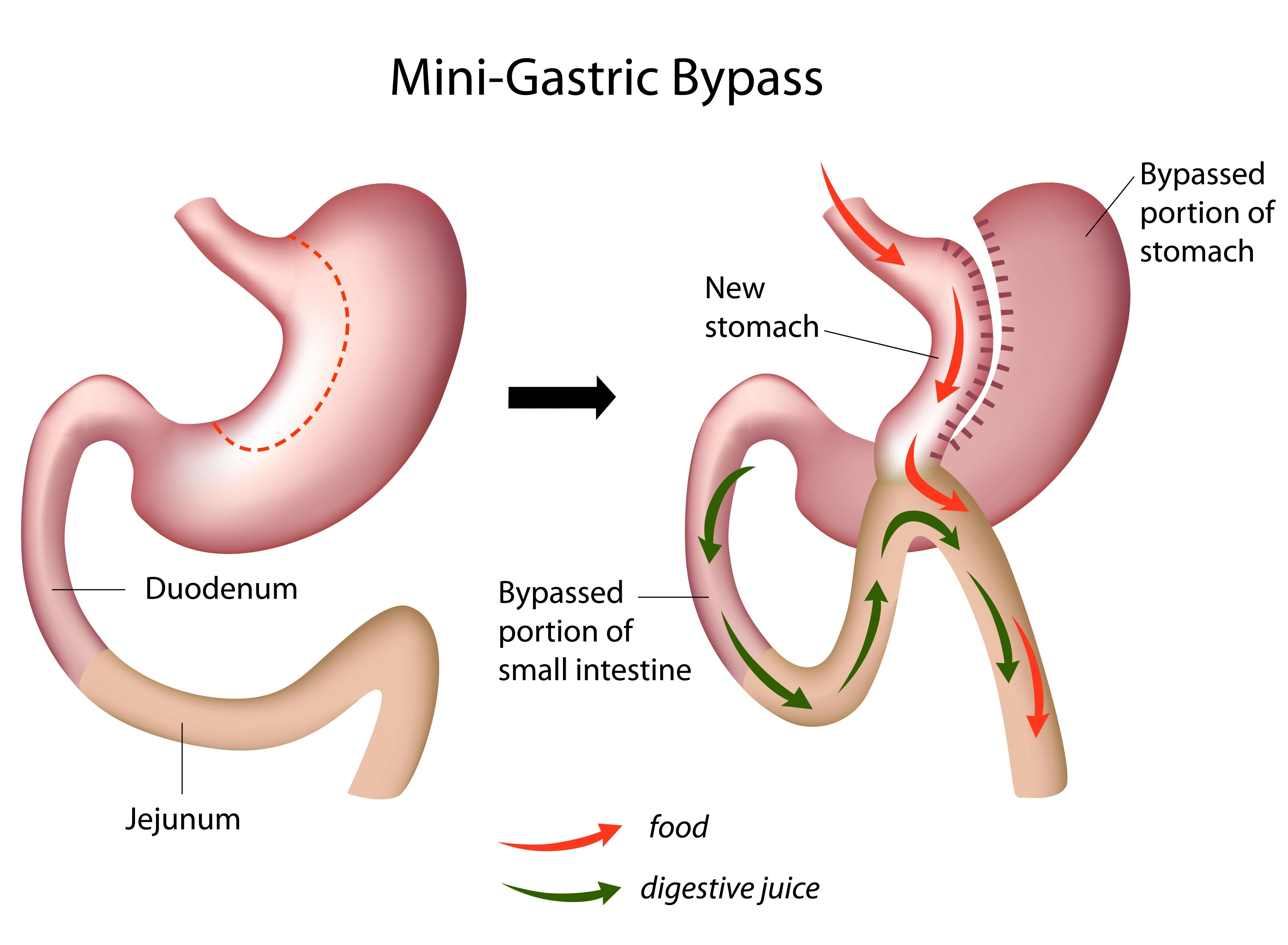 Call Me back
Call Me back
4 of 8
Roux-en-Y Gastric Bypass
Roux-en-Y gastric bypass is a process that alters your digestive system to help you eat less and absorb fewer calories. This surgery creates a smaller stomach, called a pouch. The surgeons then attach this pouch directly to your small intestine, skipping a large part of your stomach and the first part of your small intestine. Because of this, you tend to feel full quicker and absorb fewer calories, which aids in weight loss.
This is a laparoscopic surgery, it's less invasive with fewer cuts on your body, so it heals quicker and leaves smaller scars.
.webp) Call Me back
Call Me back
5 of 8
Gastric Balloon
The Gastric balloon is a non-surgical, weight-loss option for over-weight patients. If you have a body mass index of 27 or more and have failed to lose weight using other methods, this might be an ideal solution for you. The most common type of gastric balloon is the endoscopic balloon. This is placed orally using an endoscope and is removed after 6-12 months using an endoscope. This method means there are no incisions or scars, and lasts up to 6 months. Studies have shown that patients lose up to 3x the amount of weight they would from exercise and diet alone.
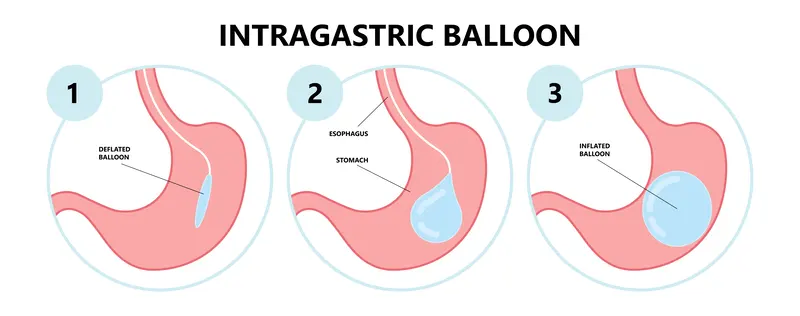 Call Me back
Call Me back
6 of 8
Gastric Bands
This method of surgery is aimed at those who are moderate to severely obese and are willing to make significant changes to their lifestyle and eating habits. The gastric band does not involve any form of stomach stapling or intestinal re-routing, instead, weight loss is achieved by placing a band around the stomach in an hourglass shape which reduces the rate food is processed through the stomach and this procedure is reversible. The tightness of the band can be adjusted from time to time to reduce the size of the opening into the rest of the stomach, depending on the progress of weight loss. This is done by a button like device which is connected to the band, positioned under the skin and is not visible. The gastric band is reversible, therefore the stomach can return to its normal size once its removed. Strict diet and behavioral changes are required from the patient in order to maintain weight loss post gastric band removal. The average recovery time for this procedure is one week with excess weight loss averaging between 40-60%, there will be an overnight hospital stay.
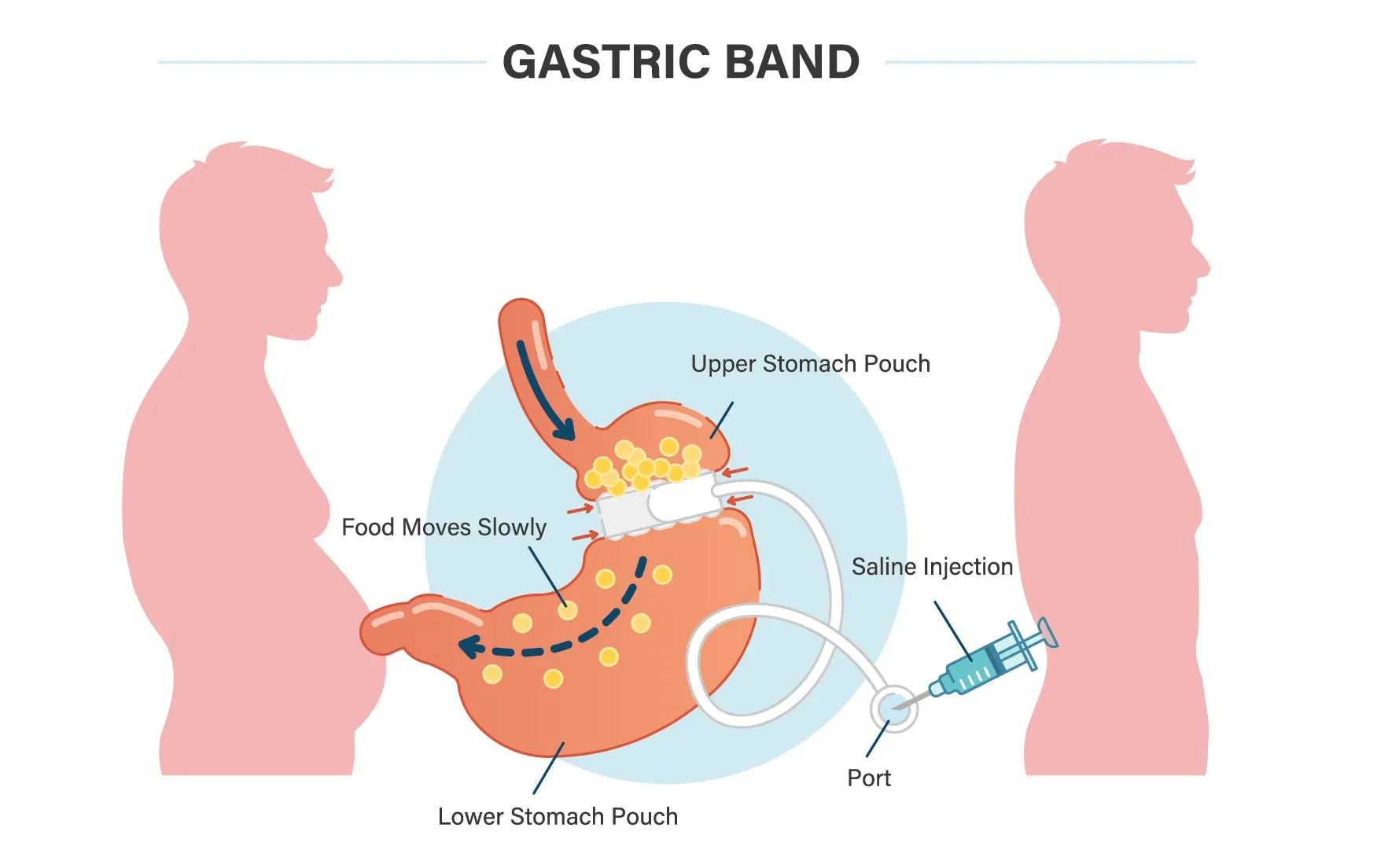 Call Me back
Call Me back
7 of 8
Revisions surgery
In this procedure, surgeons modify or repair an earlier bariatric operation. Patients whose previous bariatric surgery resulted in undesirable or disappointing outcomes are potential candidates for revisional surgery, for example removal of a gastric band and converting it to sleeve or bypass. It is imperative to make behavioral and psychological changes post-bariatric surgery to support long term weight-loss and other positive outcomes.
Call Me back8 of 8
Weight Loss Injections
Weight loss injections, often prescribed as part of a comprehensive weight management program, have gained popularity as a supplemental tool in the pursuit of a healthier lifestyle. These injections typically contain various substances designed to enhance metabolism, suppress appetite, or aid in the breakdown of fats. Common ingredients include B-vitamins, amino acids, and compounds like lipoic acid. The injections are administered by healthcare professionals and are intended to complement a balanced diet and regular exercise. While some individuals may find them beneficial for jumpstarting their weight loss journey, it's crucial to approach these injections with caution and under the guidance of a qualified medical professional. Sustainable weight loss ultimately requires a holistic approach, encompassing lifestyle modifications and a focus on overall well-being.
Call Me back















